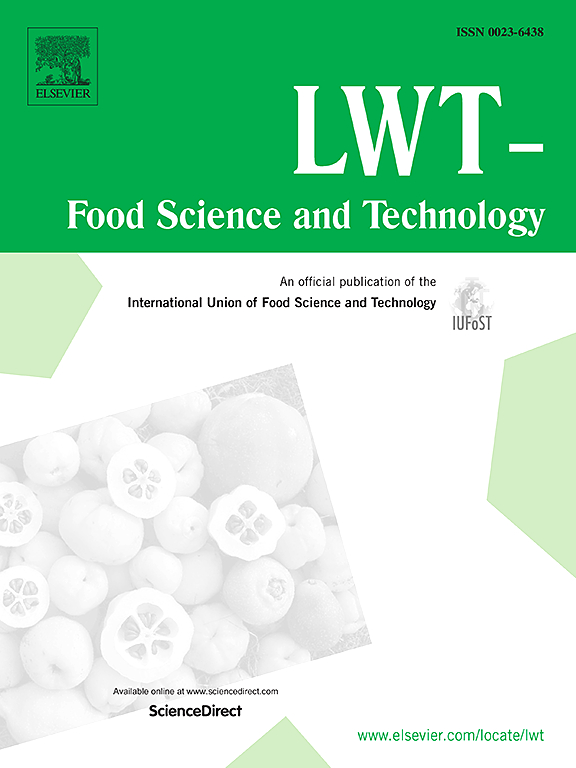A flavor imitation method for Osmanthus aroma based on molecular docking screening and odor activity value analysis
IF 6
1区 农林科学
Q1 FOOD SCIENCE & TECHNOLOGY
引用次数: 0
Abstract
In this study, a flavor imitation method for Osmanthus fragrans aroma was developed using molecular docking screening and odor activity value (OAV) analysis. A screening range of 41 volatile compounds was defined through headspace solid‒phase microextraction (HS‒SPME) analysis of O. fragrans flowers and gas chromatography‒mass spectrometry (GC‒MS) determination of its essential oil. Molecular docking was performed using these compounds with ten chosen olfactory receptors (ORs) related to floral aroma, and a screening heat map was constructed by the cluster analysis of molecular docking energy. A total of 10 key flavor compounds located in the lower half of the heatmap were screened out in combination with OAV analysis, including linalool oxide, hotrienol, linalool, β-ionone, γ-decanolactone, geraniol, theaspirane, α-ionone, phenylethyl alcohol, and dihydro-β-ionone. The flavor imitation concentrations of the key flavor compounds were calculated on the basis of their peak areas in HS-SPME-GC‒MS and standard curves, which were also verified via an omission test. Sensory evaluation suggested that the recombination sample coating on the packaging papers was highly similar to the odors of natural O. fragrans flowers, which was also confirmed by electronic nose measurements and HS-SPME-GC‒MS. This study provides a fast and easy method for flavor simulation based on molecular docking screening.

求助全文
约1分钟内获得全文
求助全文
来源期刊

LWT - Food Science and Technology
工程技术-食品科技
CiteScore
11.80
自引率
6.70%
发文量
1724
审稿时长
65 days
期刊介绍:
LWT - Food Science and Technology is an international journal that publishes innovative papers in the fields of food chemistry, biochemistry, microbiology, technology and nutrition. The work described should be innovative either in the approach or in the methods used. The significance of the results either for the science community or for the food industry must also be specified. Contributions written in English are welcomed in the form of review articles, short reviews, research papers, and research notes. Papers featuring animal trials and cell cultures are outside the scope of the journal and will not be considered for publication.
 求助内容:
求助内容: 应助结果提醒方式:
应助结果提醒方式:


